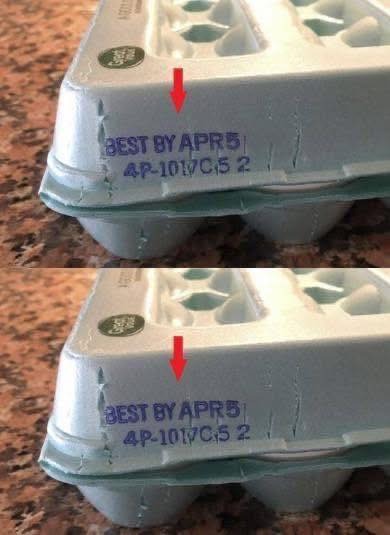Tip: Eggs are best consumed within 30 days of the packing date (as long as they’re stored properly in the refrigerator).
What About the “P” Code?
You might also notice a code starting with the letter “P”. This is the plant code, which tells you the exact facility where the eggs were processed.
This information becomes especially important during product recalls. For example, during past salmonella outbreaks, being able to trace the Julian date and plant code helped consumers determine if their eggs were safe.
Egg Grades and Labels – What They Really Mean
Beyond freshness, you’ll also see a USDA grade shield on cartons:
Grade AA: The highest quality—firm whites and round yolks. Perfect for frying, poaching, or when presentation matters.
Grade A: Slightly less firm, but still excellent for everyday cooking and baking.
And don’t forget the other labels:
Organic: From hens fed organic feed, with no synthetic pesticides or fertilizers.
Pastured: Hens raised outdoors, often producing richer yolks and better flavor.
Final Thoughts
Next time you’re shopping for eggs, don’t just look at the expiration date. Take a moment to check the Julian date and plant code—it’s the secret to buying the freshest, highest-quality eggs. Not only will your meals taste better, but you’ll also have peace of mind knowing exactly what you’re bringing home.
So the next time you whip up a sunny-side-up breakfast or bake a cake, you’ll know your eggs are at their absolute best.
ADVERTISEMENT

